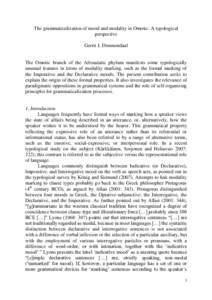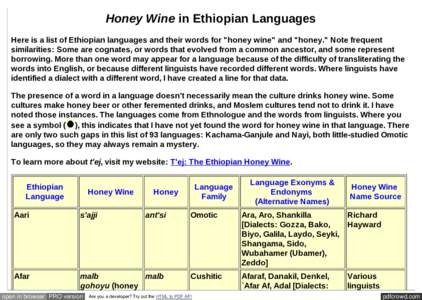<--- Back to Details
| First Page | Document Content | |
|---|---|---|
 Date: 2002-08-05 12:08:57Subdivisions of Ethiopia Africa Benishangul-Gumuz Region Oromia Region Omotic languages Kwama people Mao languages Anfillo language Oromo language Languages of Ethiopia Languages of Africa Woredas of Ethiopia |
Add to Reading List |
 Sociolinguistic Survey Report on Languages of the Asosa - Begi - Komosha Area
Sociolinguistic Survey Report on Languages of the Asosa - Begi - Komosha Area


![Microsoft Word[removed]080_gmv.doc Microsoft Word[removed]080_gmv.doc](https://www.pdfsearch.io/img/92bb7081e1659d960f3fc0c98761c399.jpg)
![Microsoft Word[removed]doc Microsoft Word[removed]doc](https://www.pdfsearch.io/img/b99d15b99061a25ad5c0312ff634fcca.jpg)